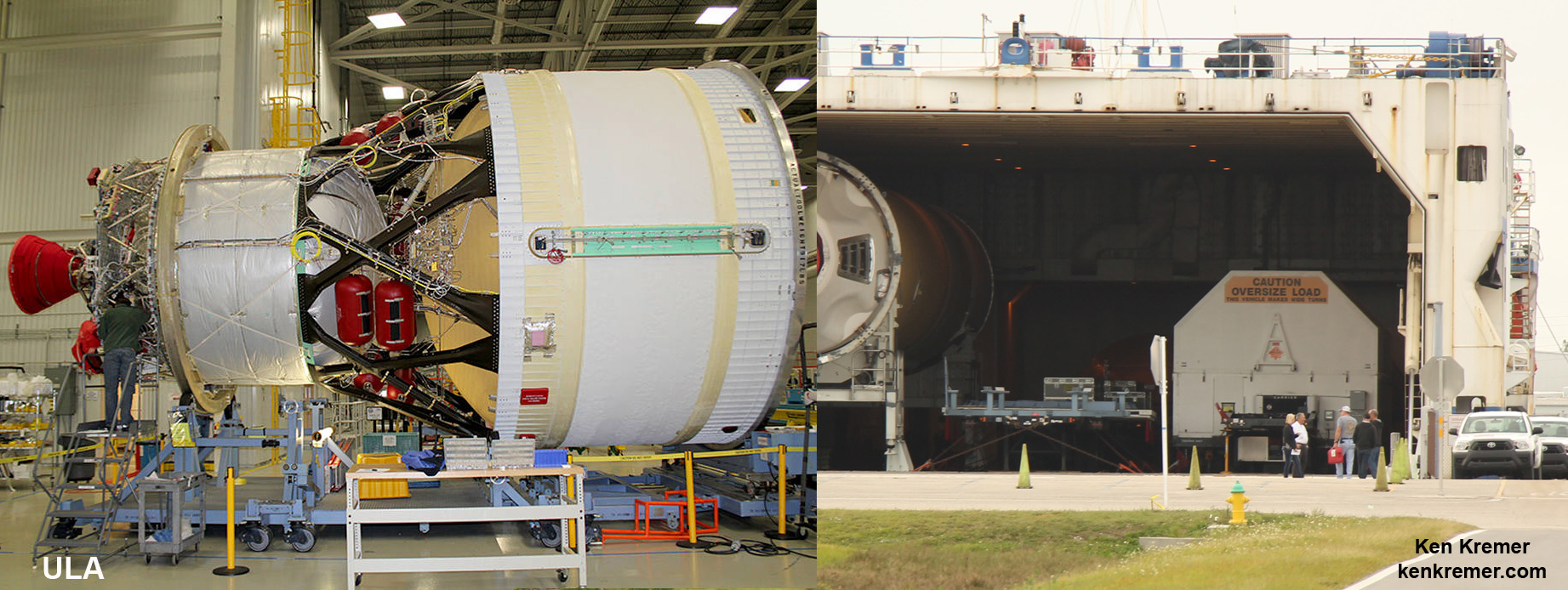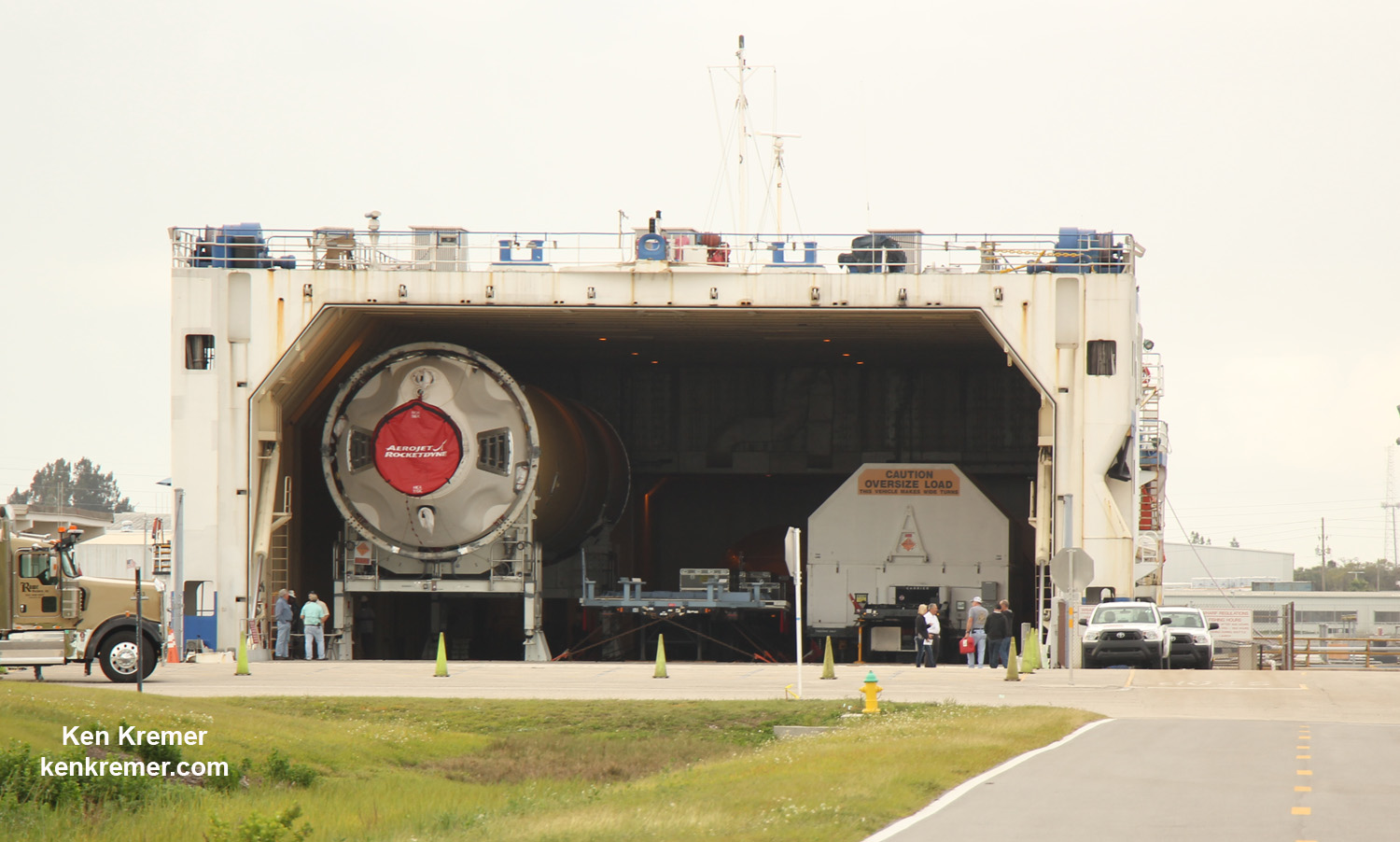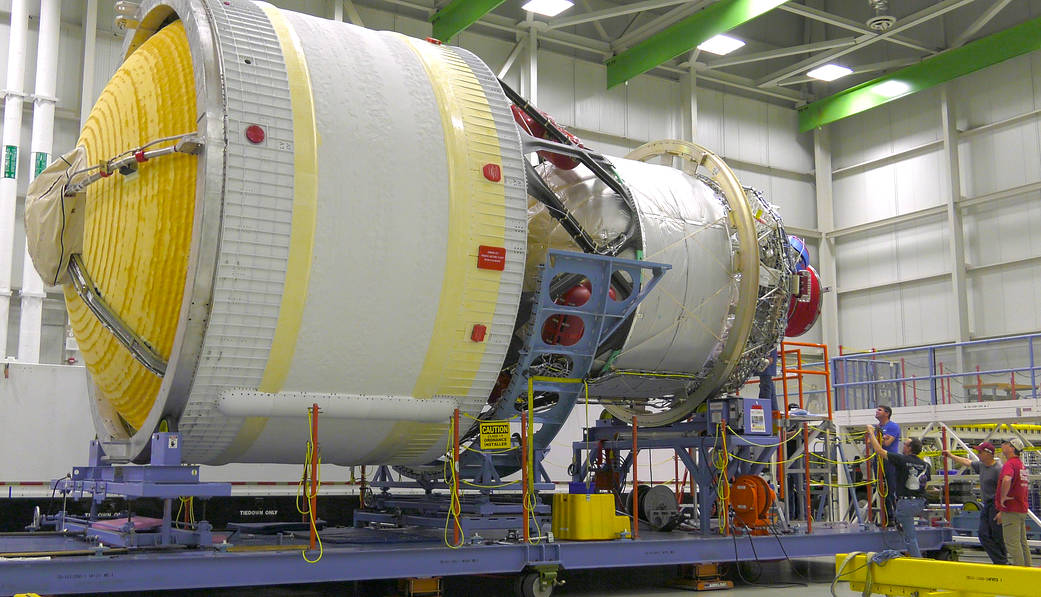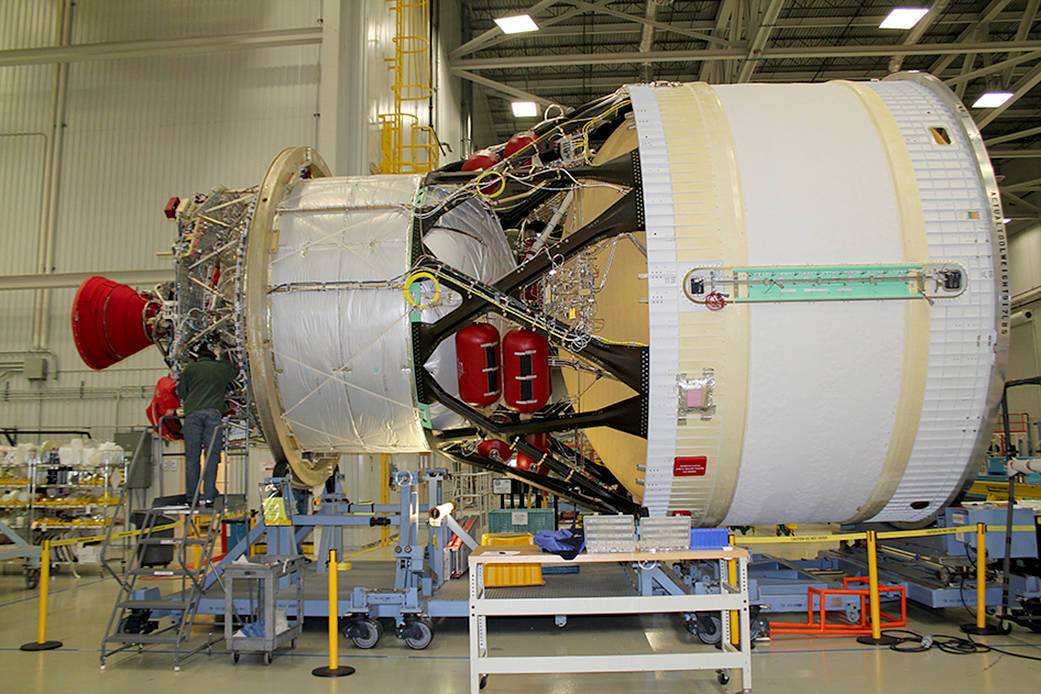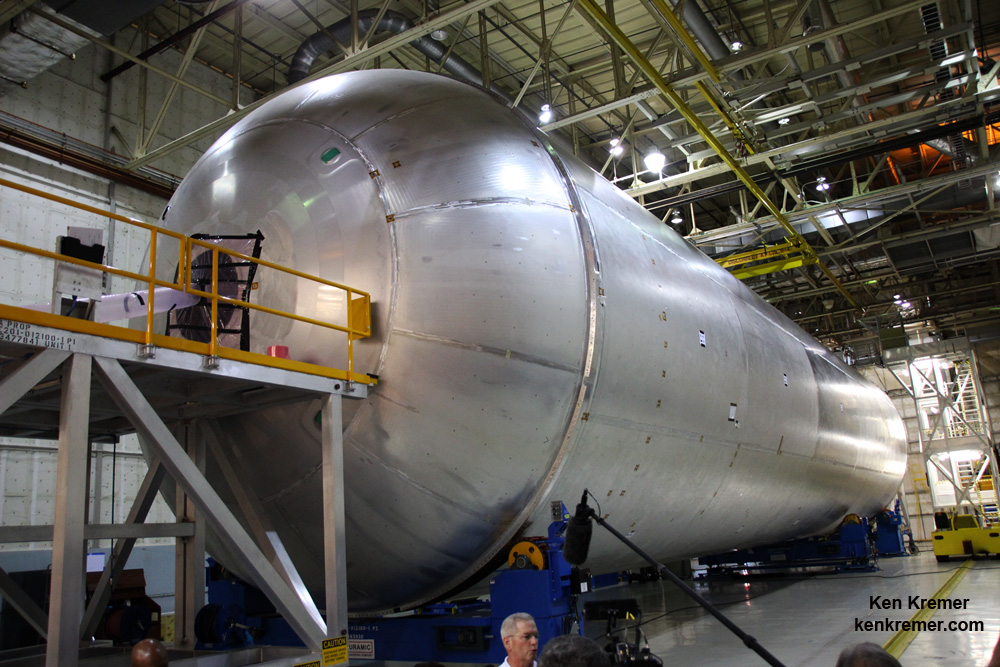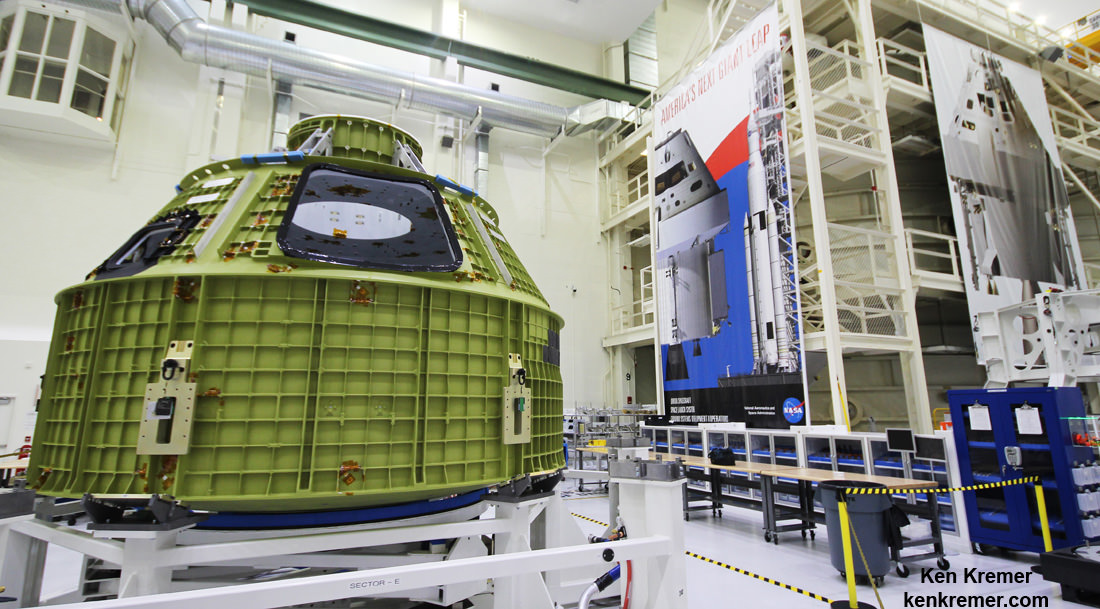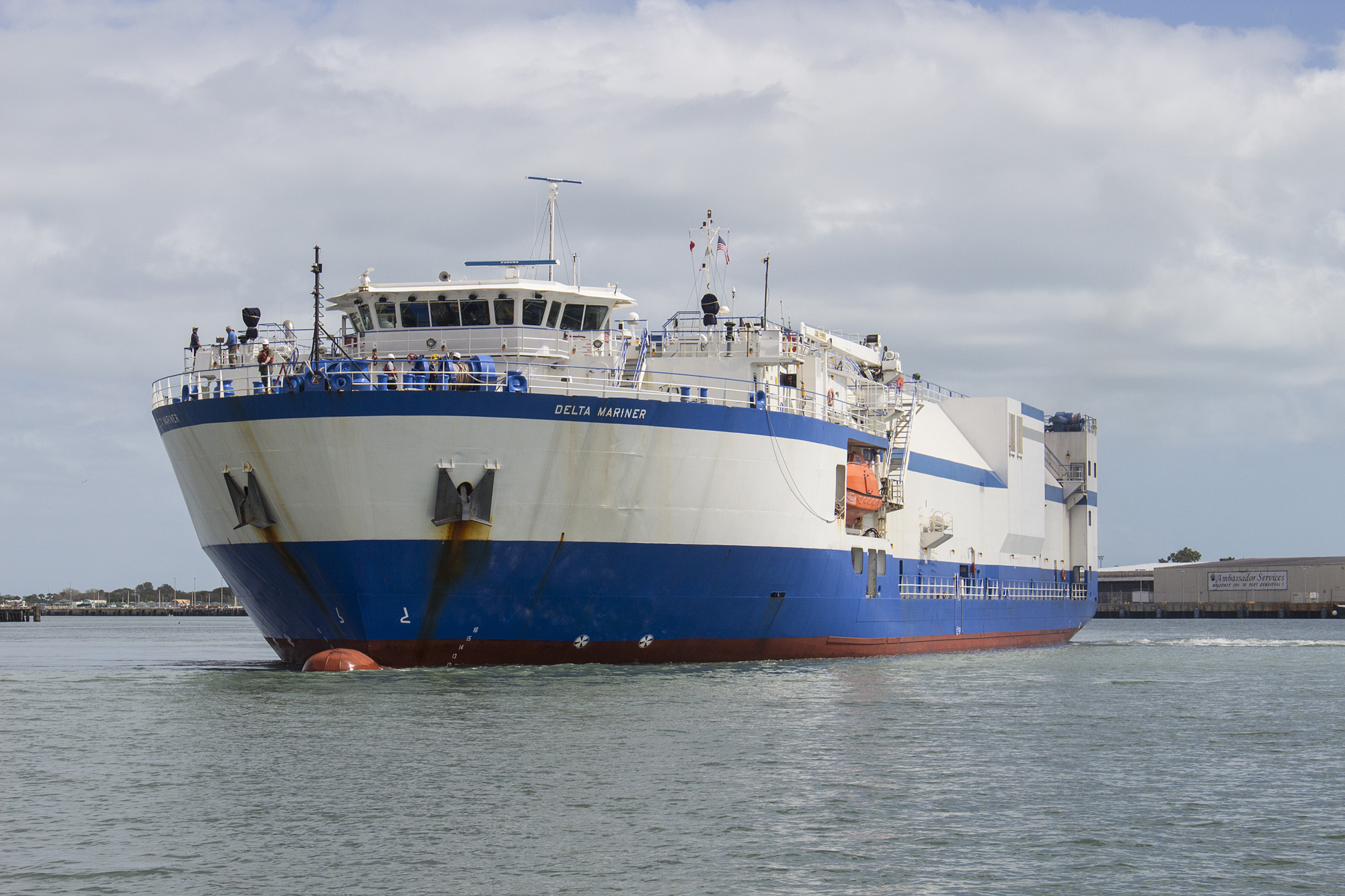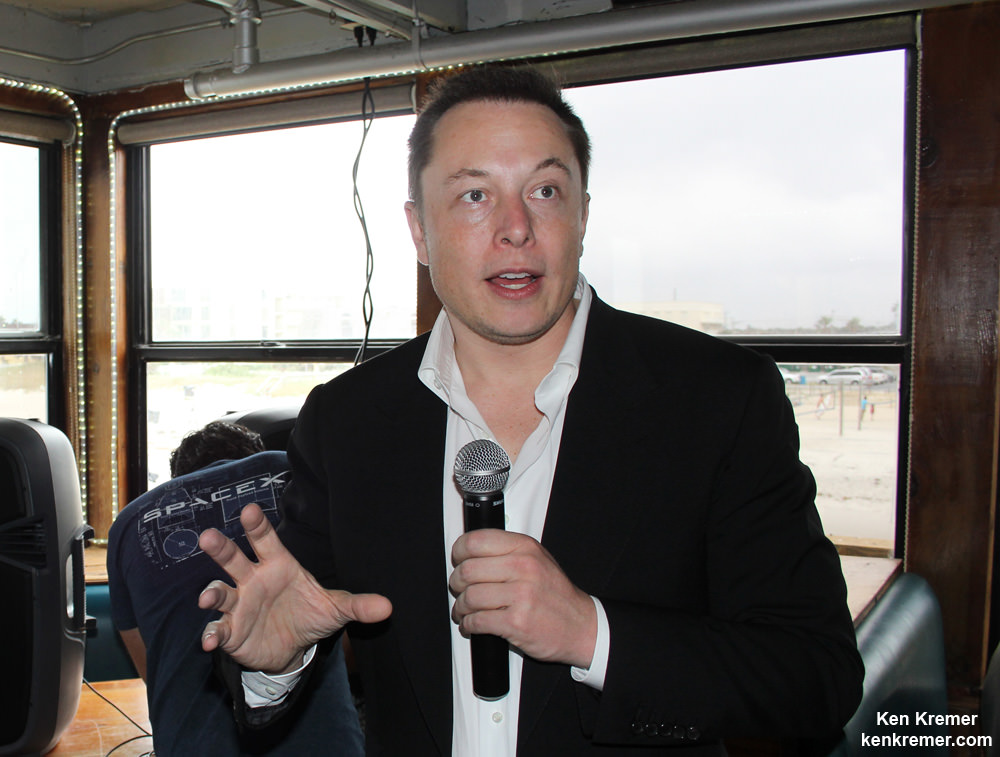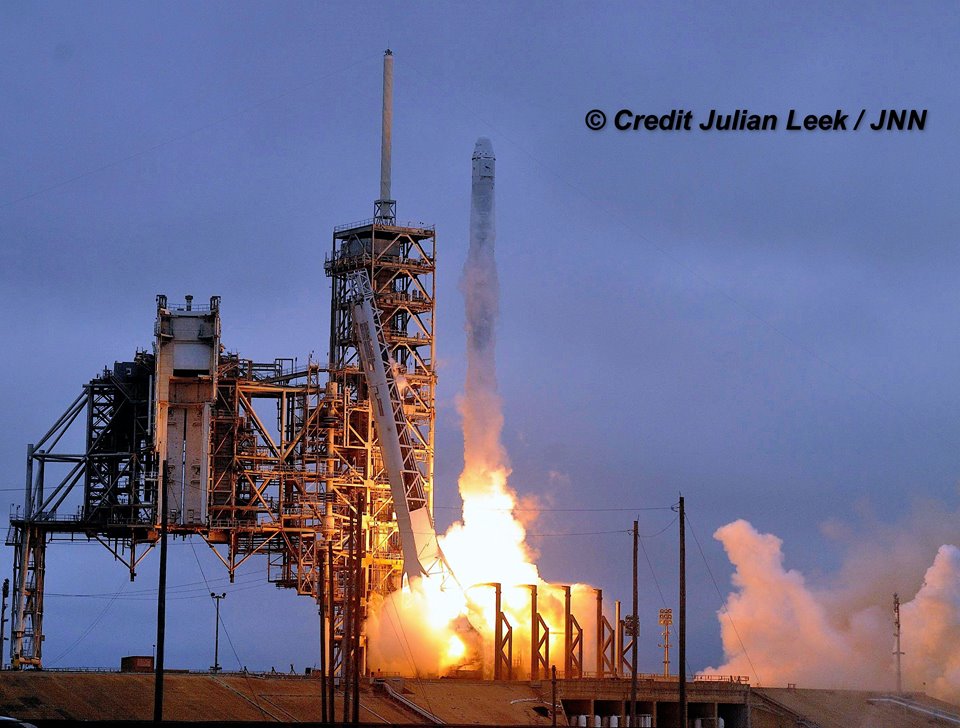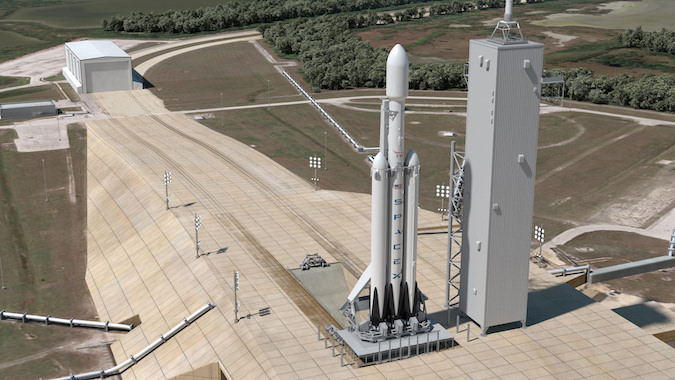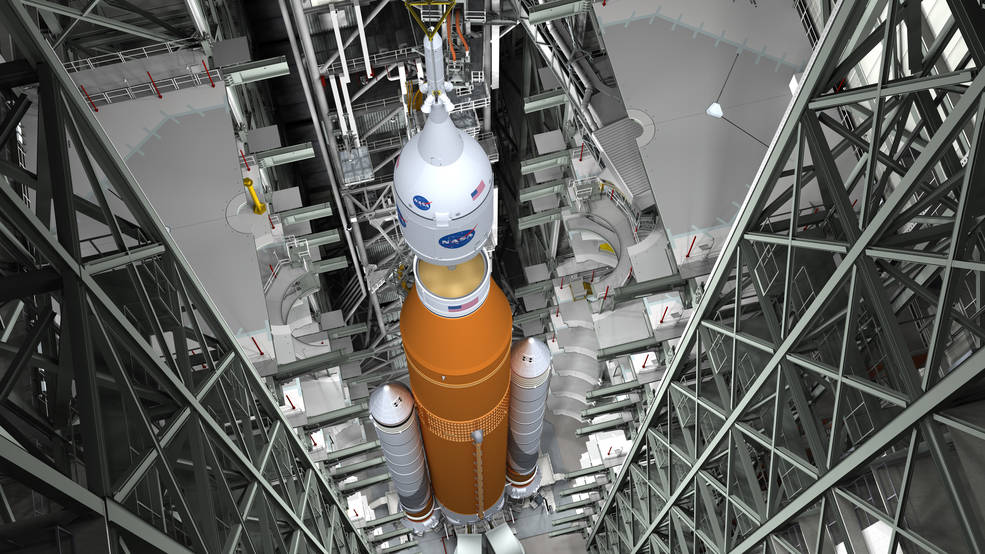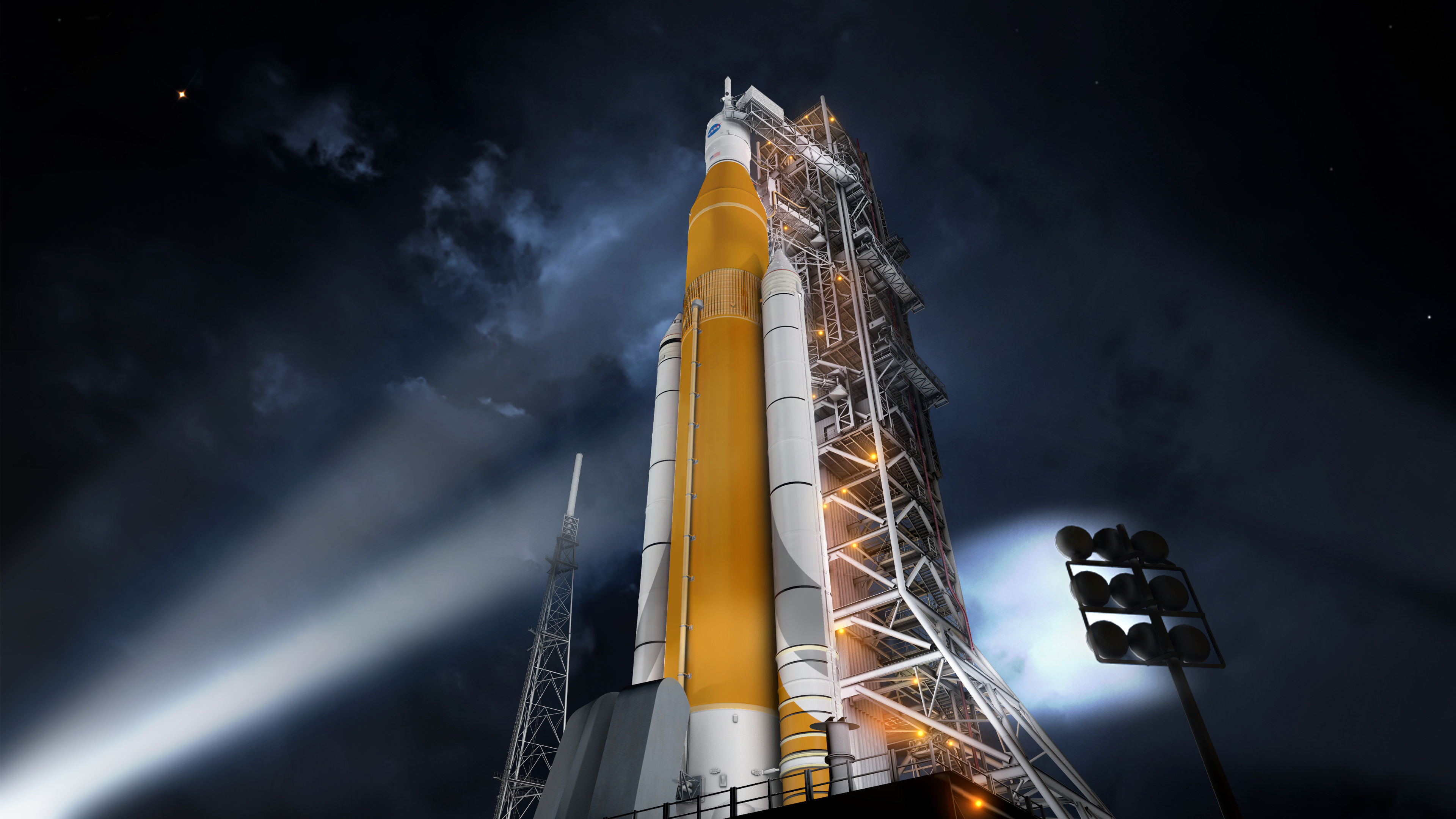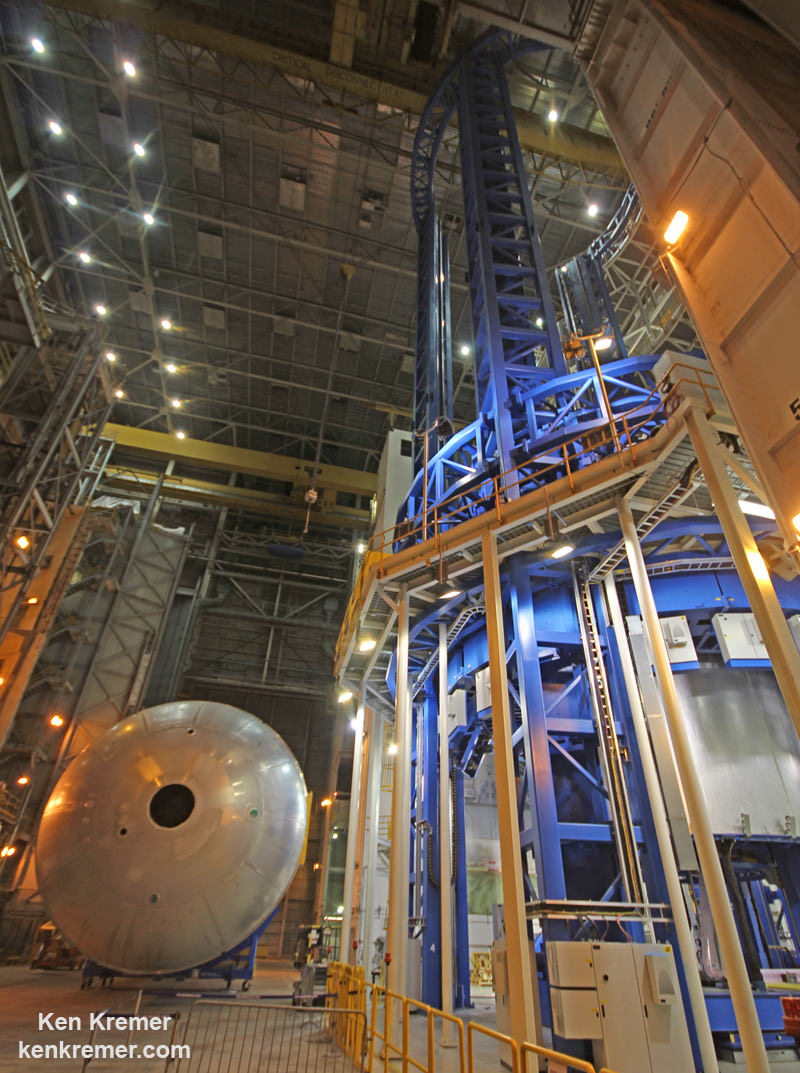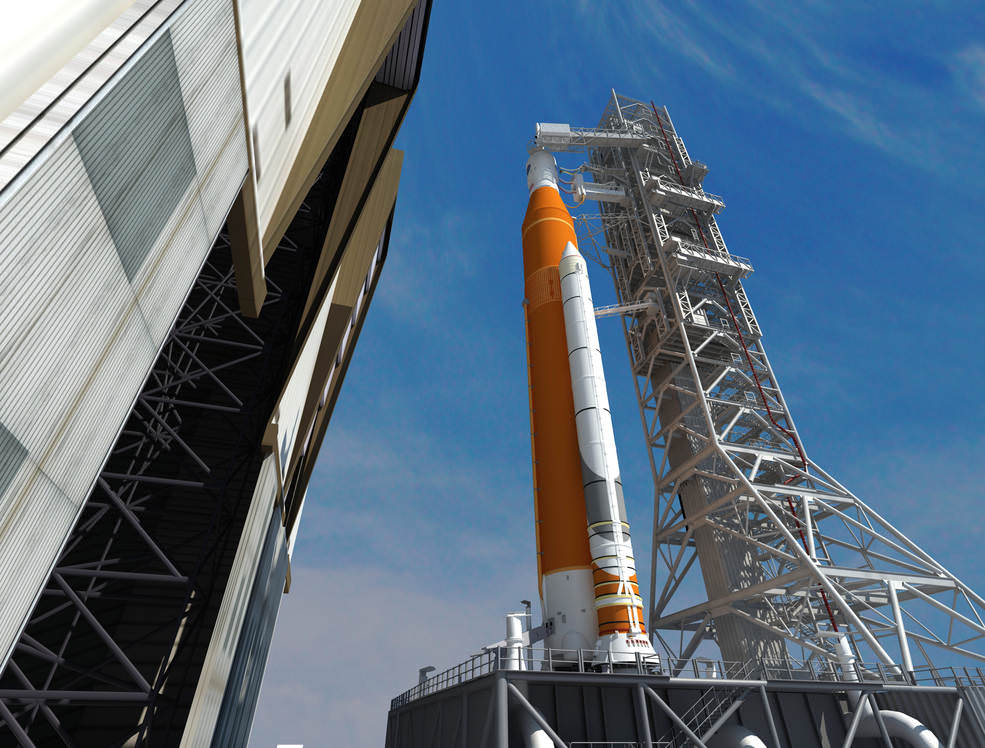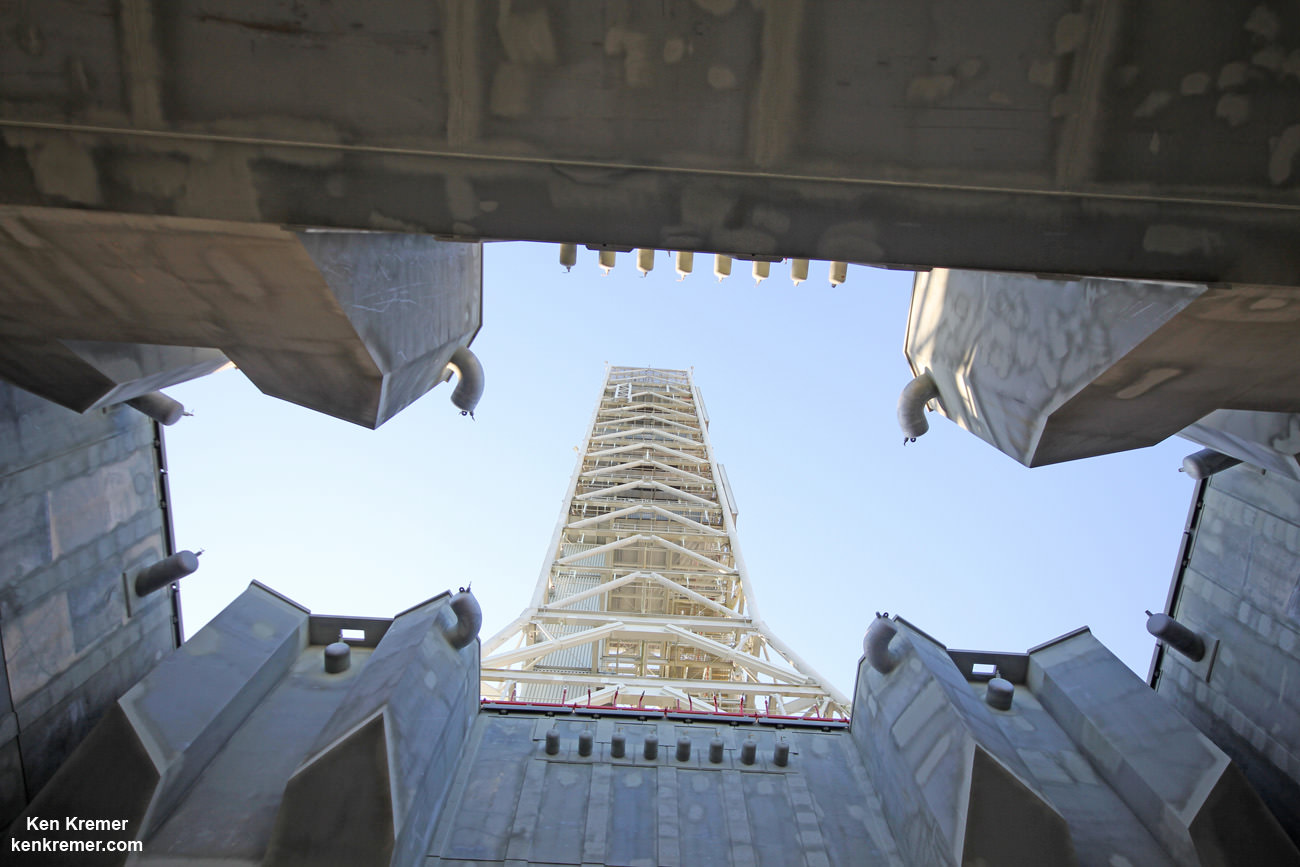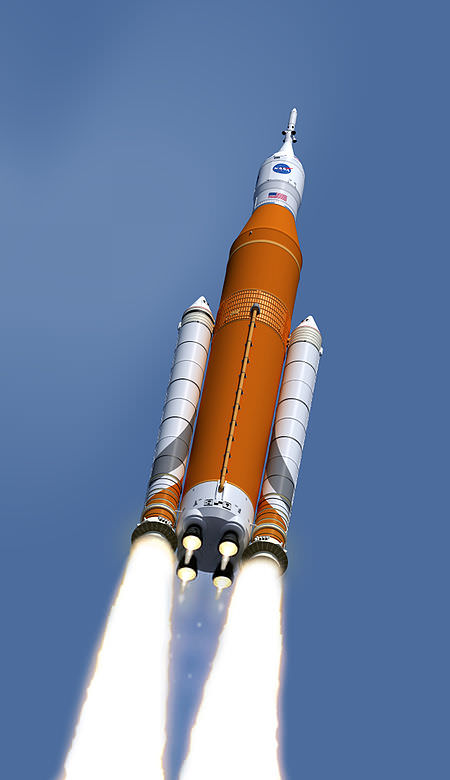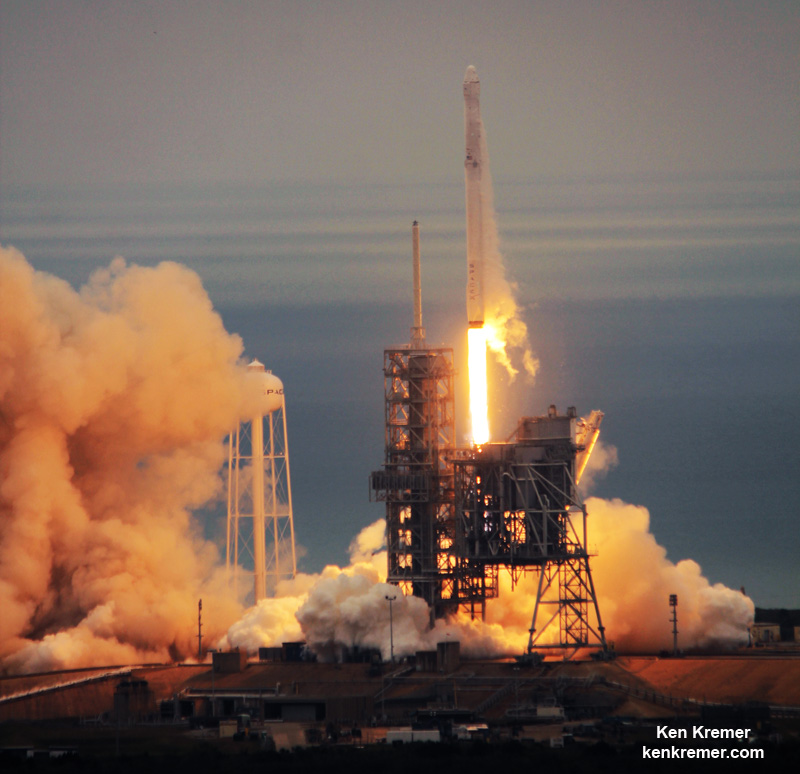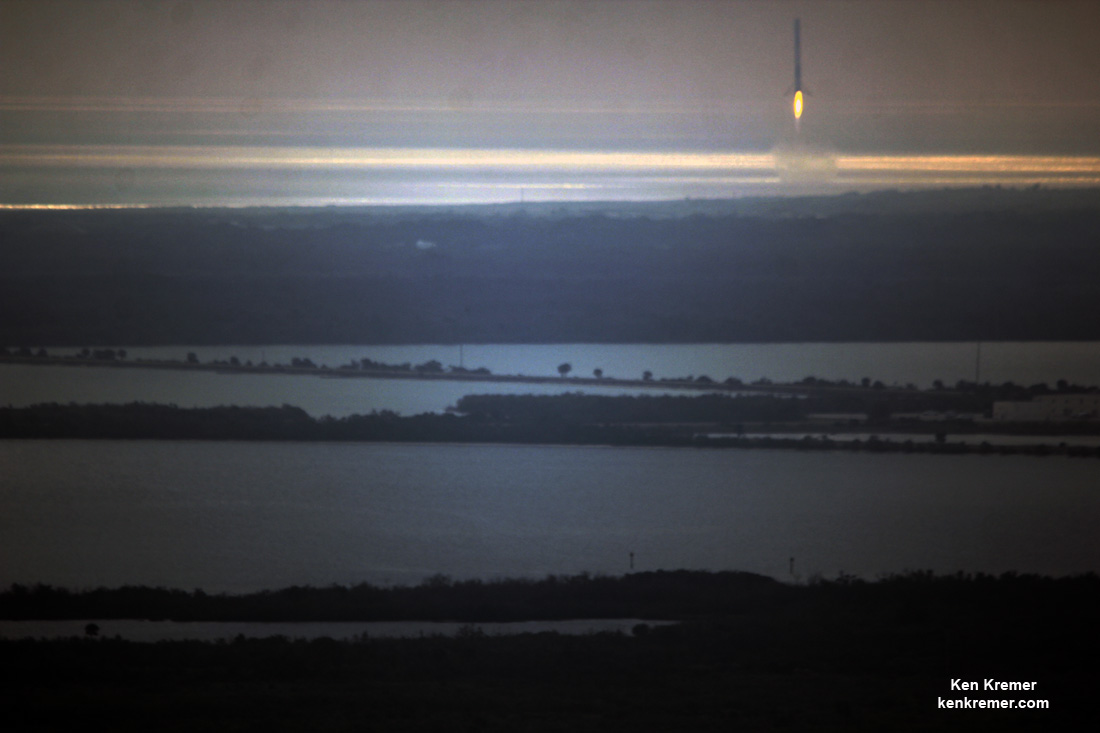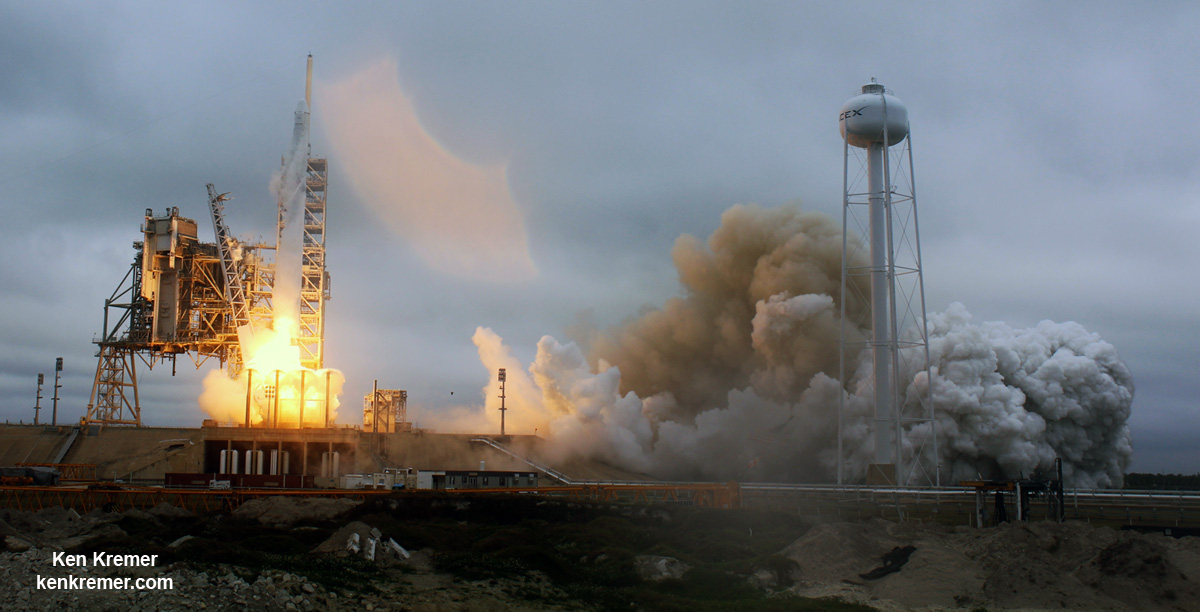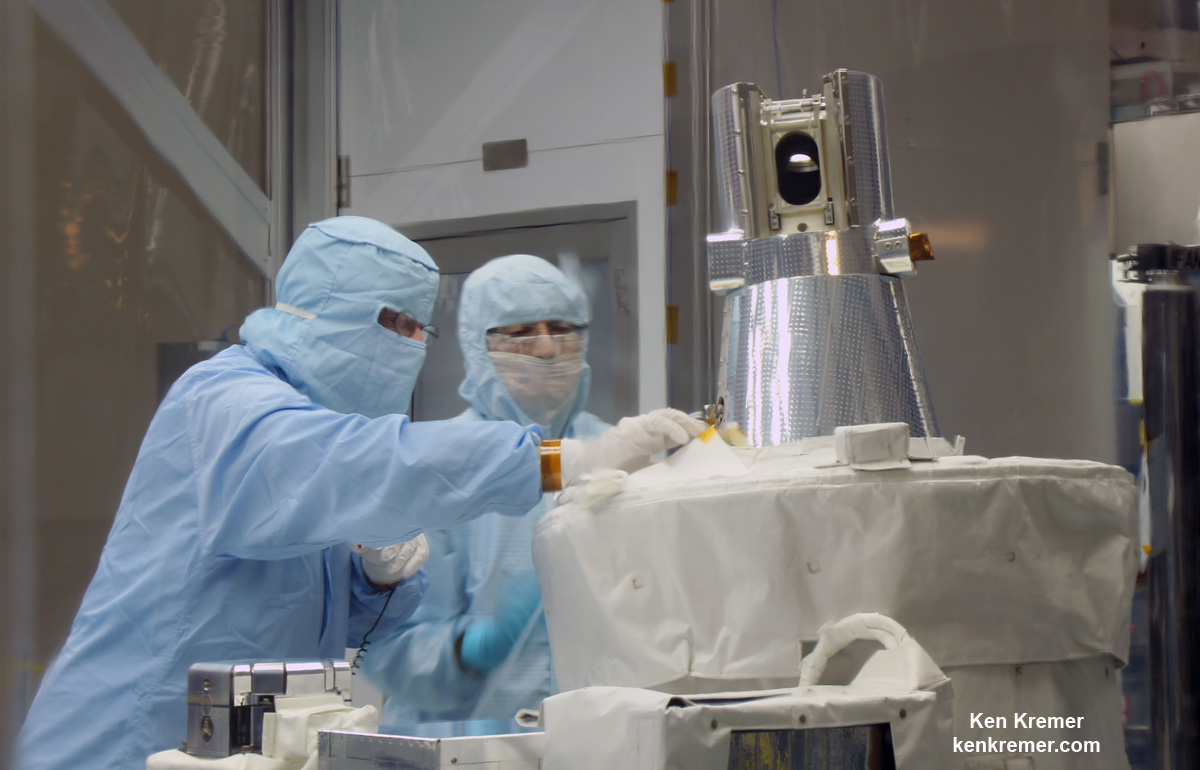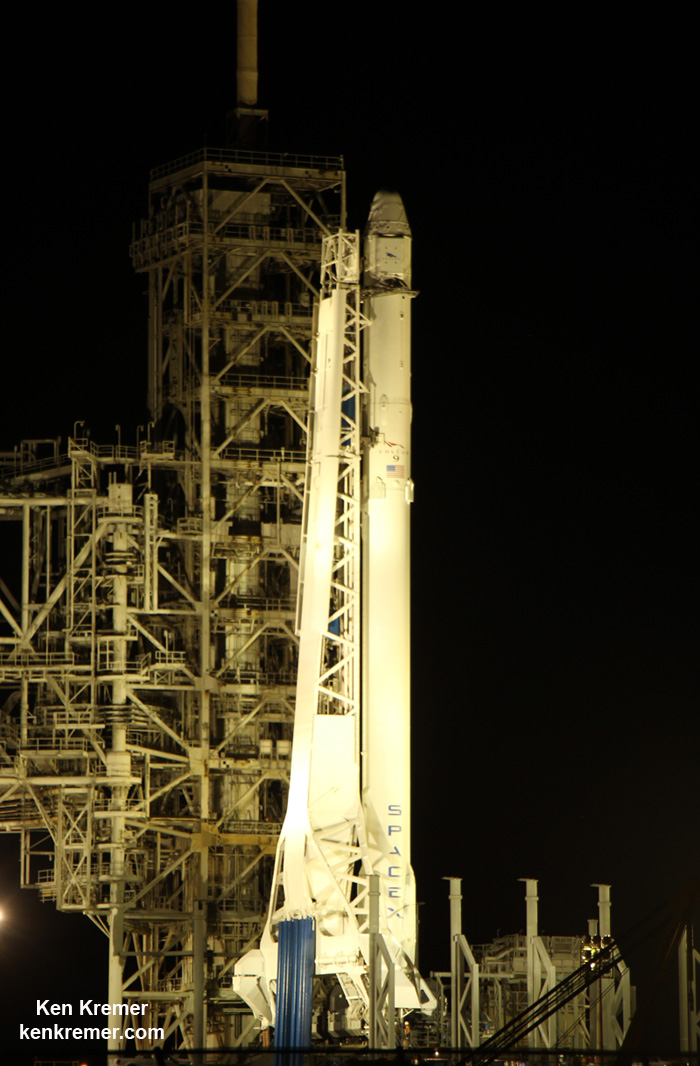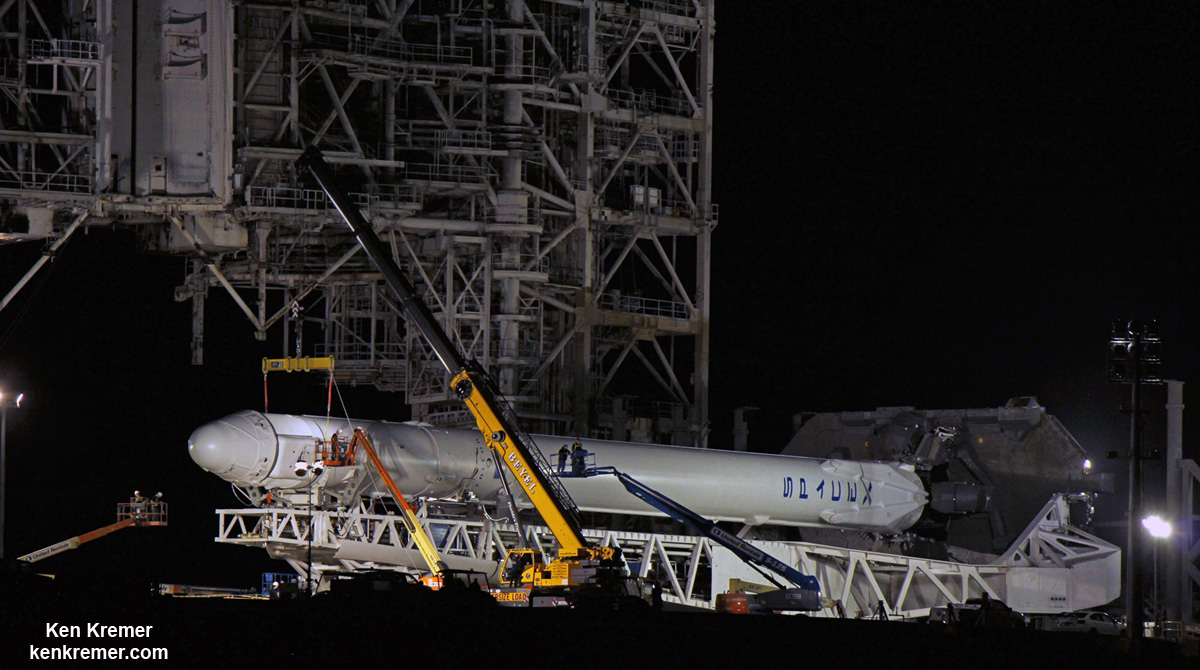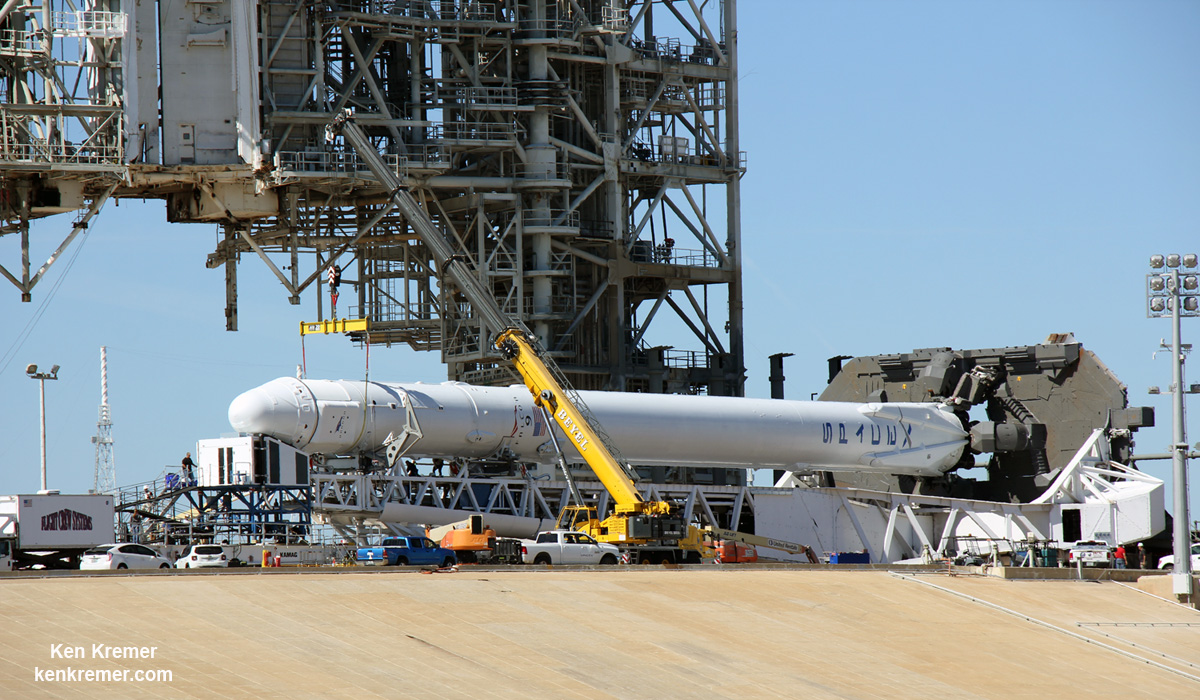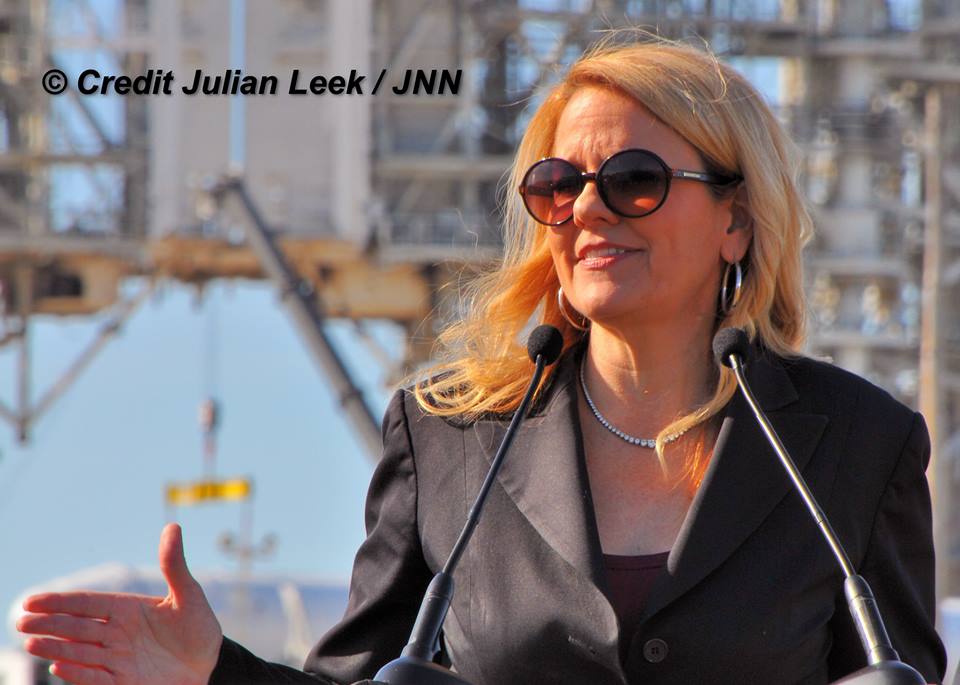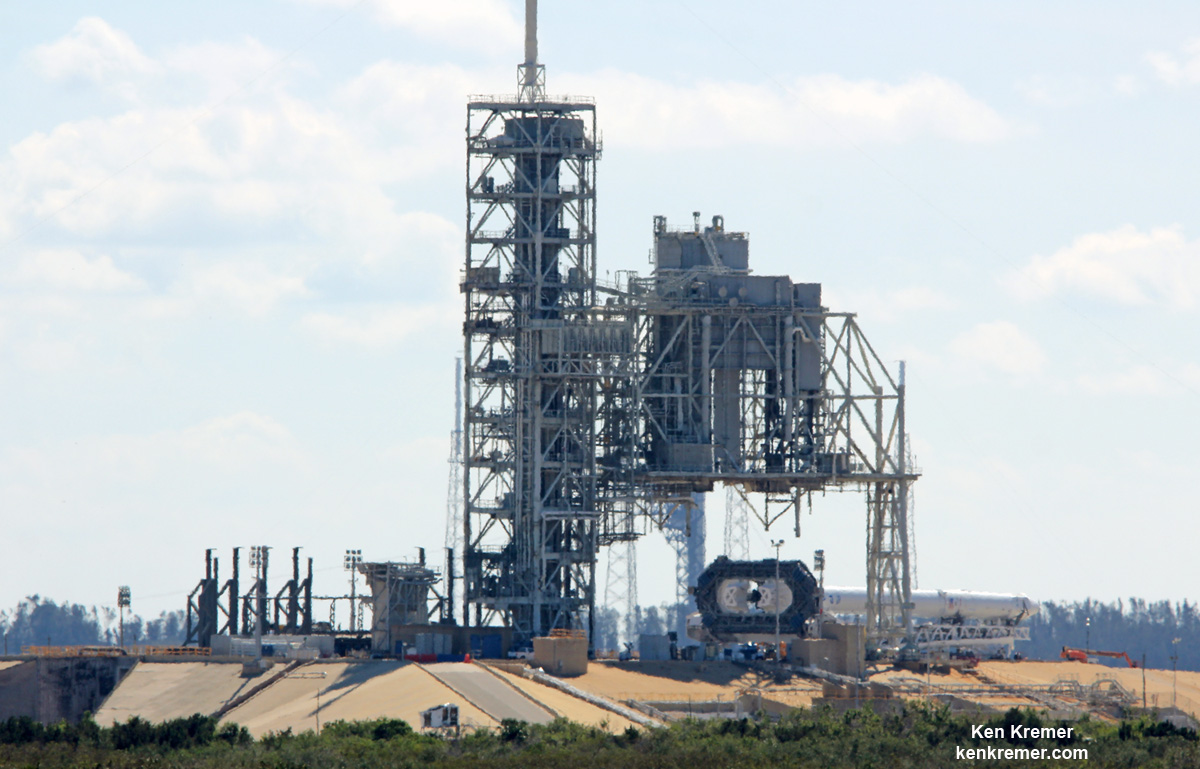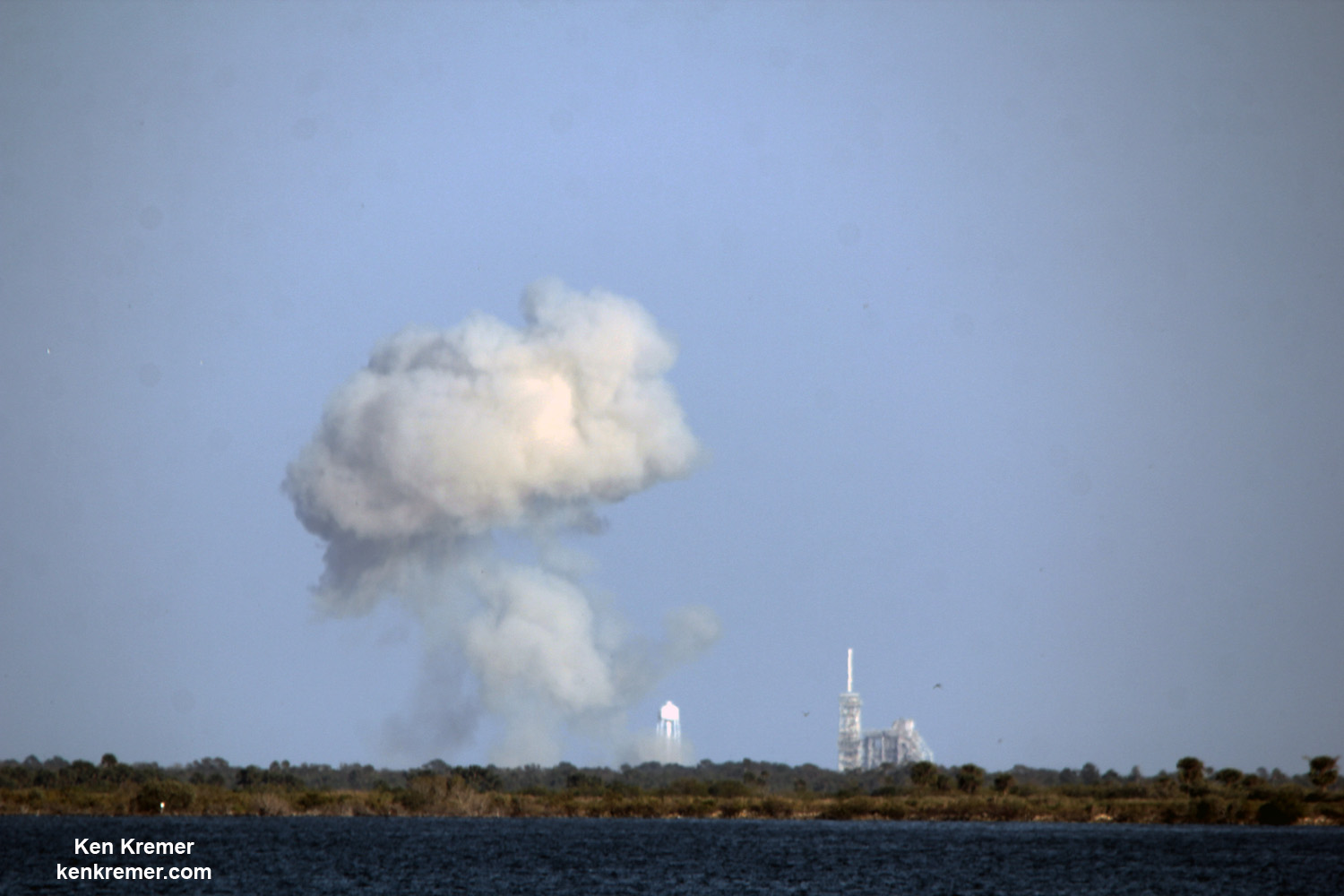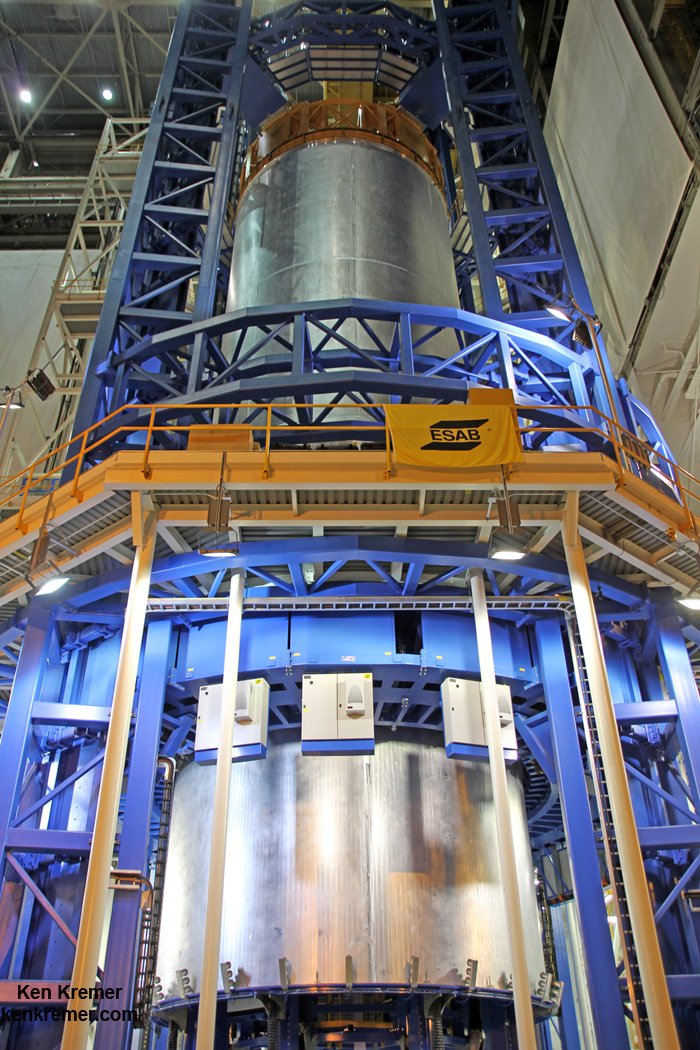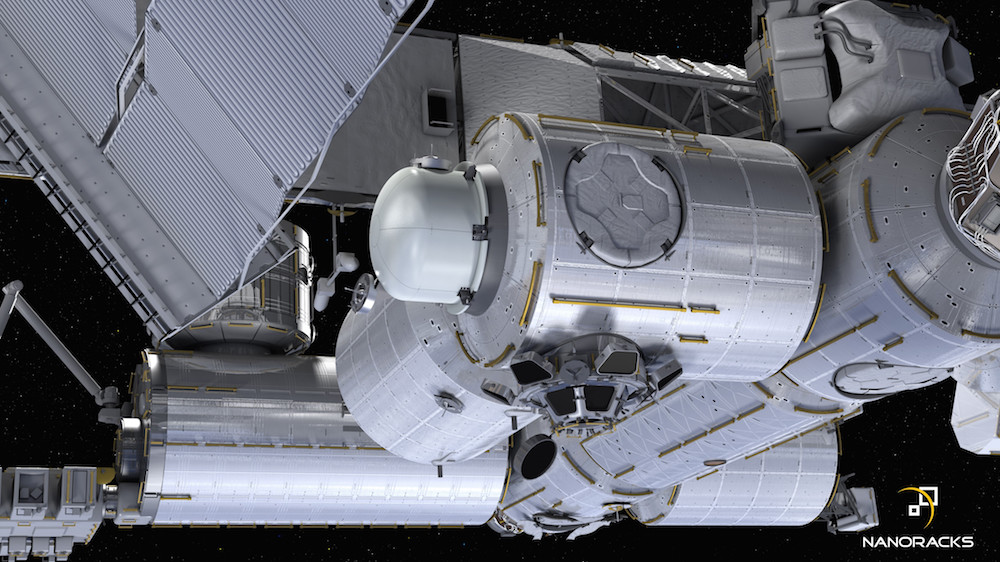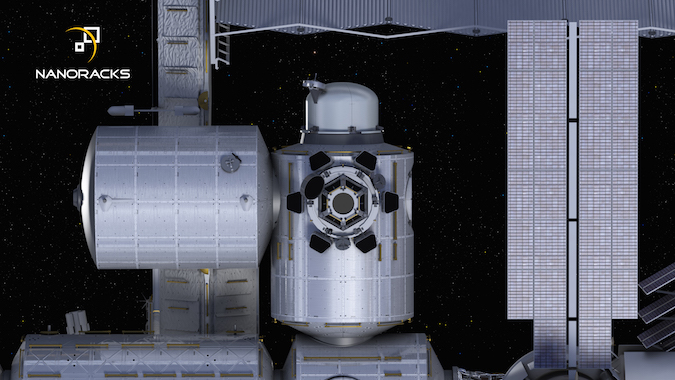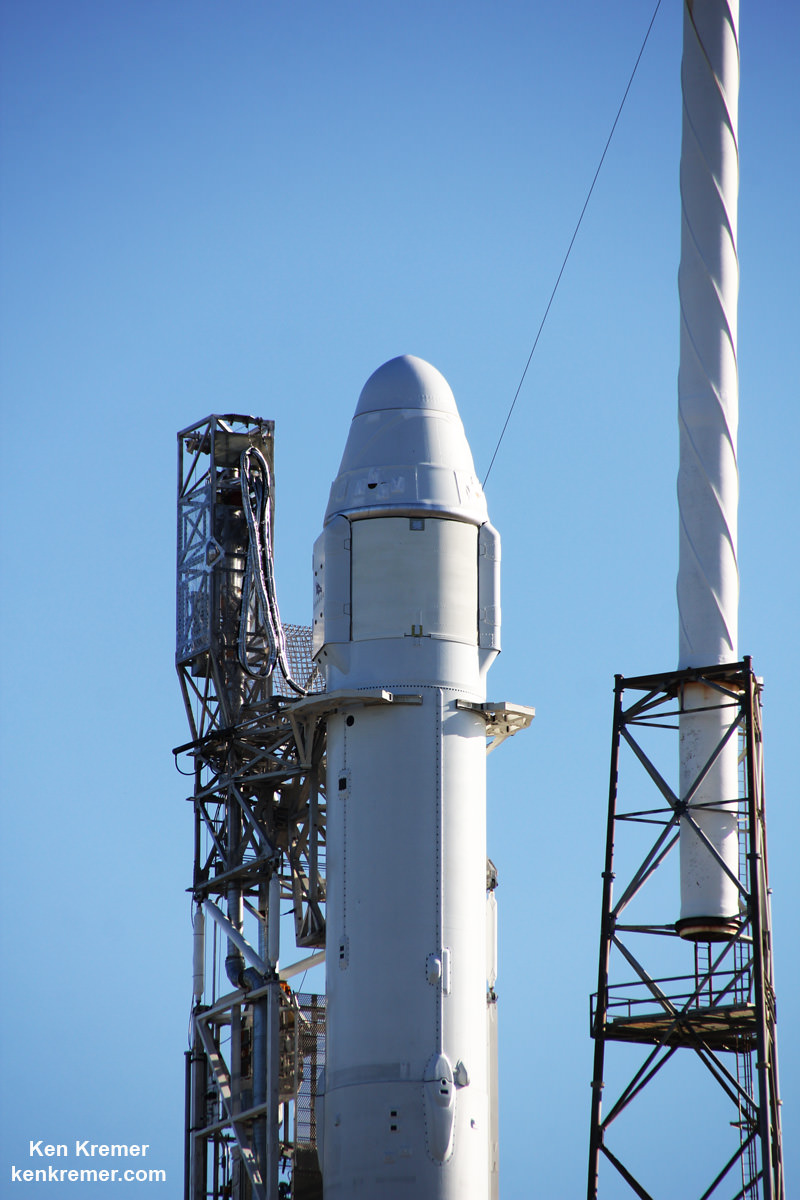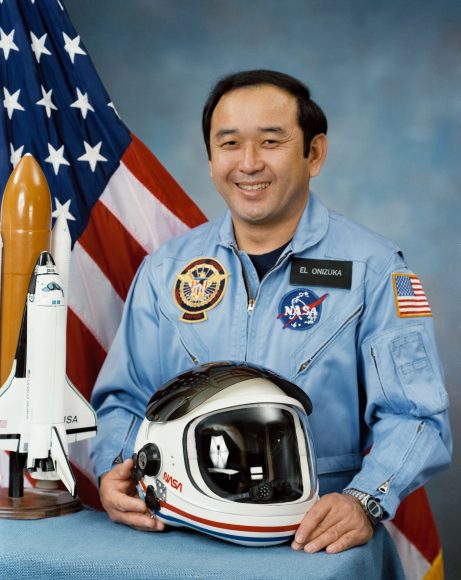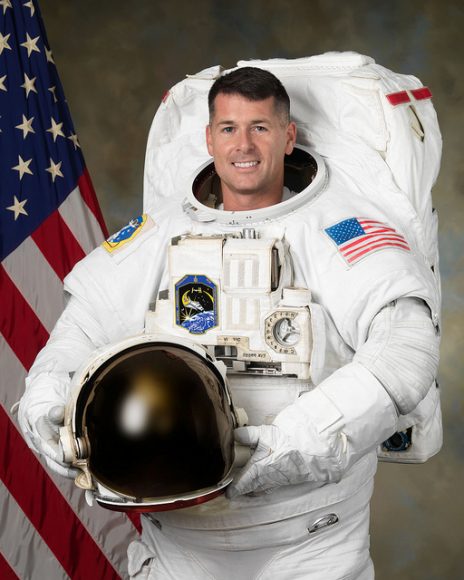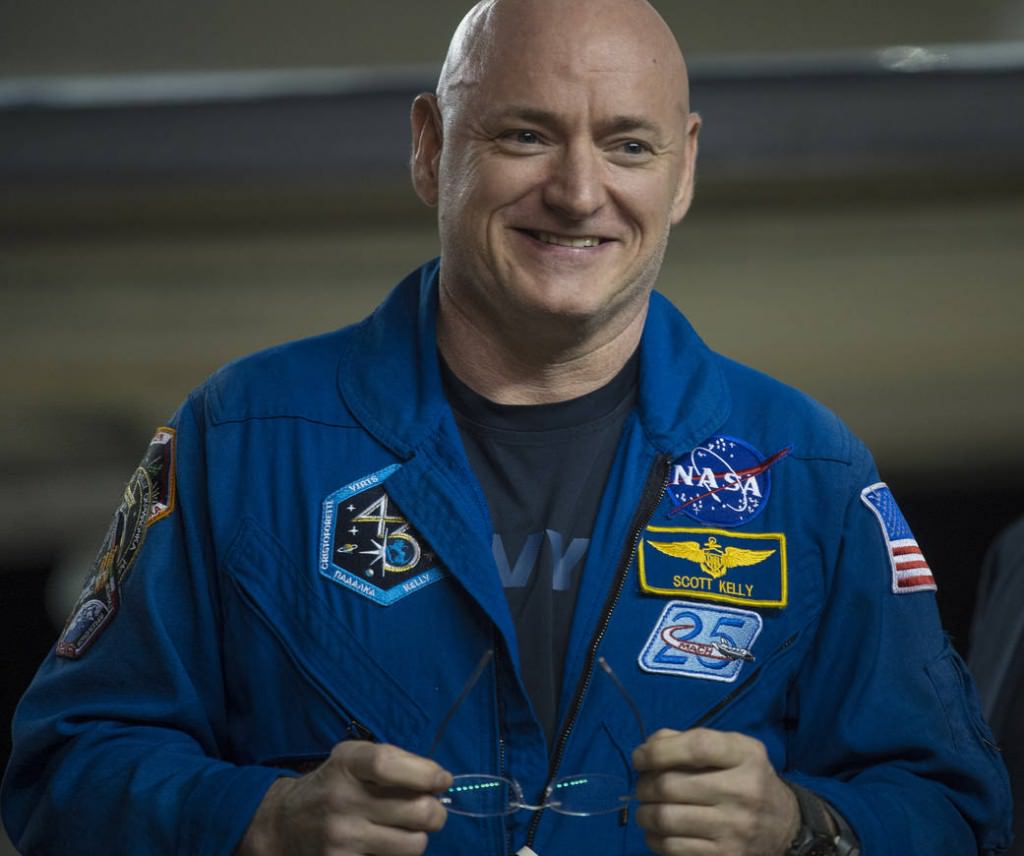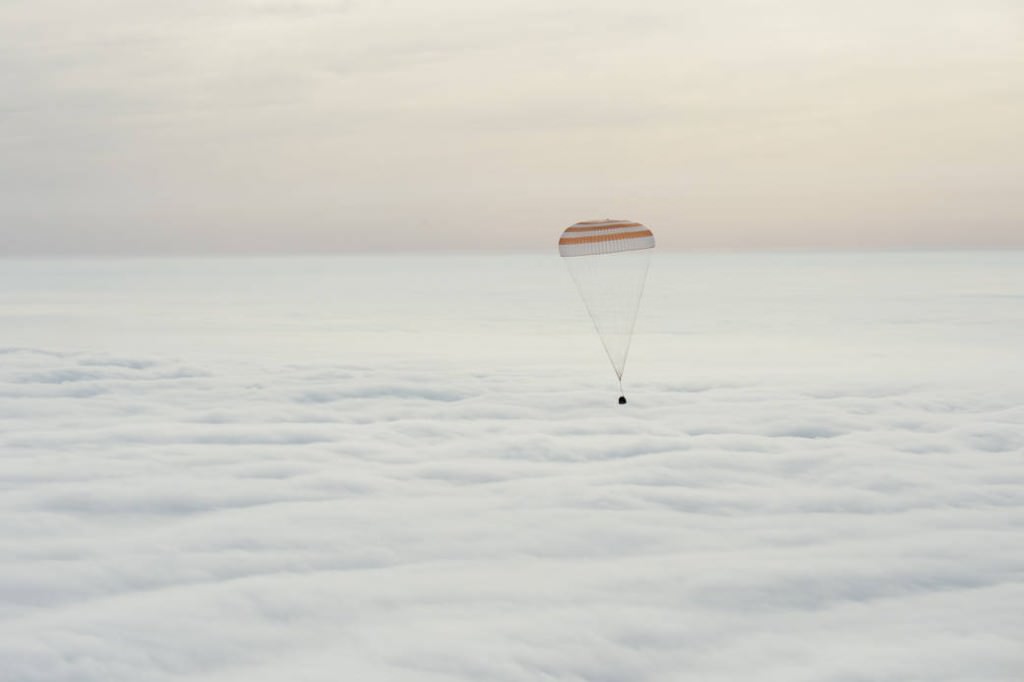
KENNEDY SPACE CENTER, FL – The next Cygnus cargo ship launching to the International Space Station (ISS) has been christened the ‘S.S. John Glenn’ to honor legendary NASA astronaut John Glenn – the first American to orbit the Earth back in February 1962.
John Glenn was selected as one of NASA’s original seven Mercury astronauts chosen at the dawn of the space age in 1959. He recently passed away on December 8, 2016 at age 95.
The naming announcement was made by spacecraft builder Orbital ATK during a ceremony with the ‘S.S. John Glenn’, held inside the Kennedy Space Center (KSC) clean room facility where the cargo freighter is in the final stages of flight processing – and attended by media including Universe Today on Thursday, March 9.
“It is my humble duty and our great honor to name this spacecraft the S.S. John Glenn,” said Frank DeMauro, vice president and general manager of Orbital ATK’s Advanced Programs division, during the clean room ceremony in the inside the Payload Hazardous Servicing Facility high bay at NASA’s Kennedy Space Center in Florida.

The S.S. John Glenn is scheduled to liftoff as the Orbital ATK Cygnus OA-7 spacecraft for NASA on a United Launch Alliance (ULA) Atlas V rocket launch no earlier than March 21 from Space launch Complex-41 (SLC-41) on Cape Canaveral Air Force Station, Florida.
The space station resupply mission dubbed Cygnus OA-7 is dedicated to Glenn and his landmark achievement as the first American to orbit the Earth on Feb. 20, 1962 and his life promoting science, human spaceflight and education.
“John Glenn was probably responsible for more students studying math and science and being interested in space than anyone,” said former astronaut Brian Duffy, Orbital ATK’s vice president of Exploration Systems, during the clean room ceremony on March 9.
“When he flew into space in 1962, there was not a child then who didn’t know his name. He’s the one that opened up space for all of us.”

Glenn’s 3 orbit mission played a pivotal role in the space race with the Soviet Union at the height of the Cold War era.
“He has paved the way for so many people to follow in his footsteps,” said DeMauro.
All of Orbital ATK’s Cygnus freighters have been named after deceased American astronauts.
Glenn is probably America’s most famous astronaut in addition to Neil Armstrong, the first man to walk on the moon during Apollo 11 in 1969.
John Glenn went on to become a distinguished U.S. Senator from his home state of Ohio on 1974. He served for 24 years during 4 terms.
He later flew a second mission to space aboard the Space Shuttle Discovery in 1998 as part of the STS-95 crew at age 77. Glenn remains the oldest person ever to fly in space.
“Glenn paved the way for America’s space program, from moon missions, to the space shuttle and the International Space Station. His commitment to America’s human space flight program and his distinguished military and political career make him an ideal honoree for the OA-7 mission,” Orbital ATK said in a statement.

“The OA-7 mission is using the Enhanced Cygnus Pressurized Cargo Module (PCM) to deliver cargo to the International Space Station,” said DeMauro.
Cygnus will carry 7,700 pounds (3500 kg) of cargo to the station with a total volumetric capacity of 27 cubic meters.
“All these teams have worked extremely hard to get this mission to this point and we are looking forward to a great launch.”
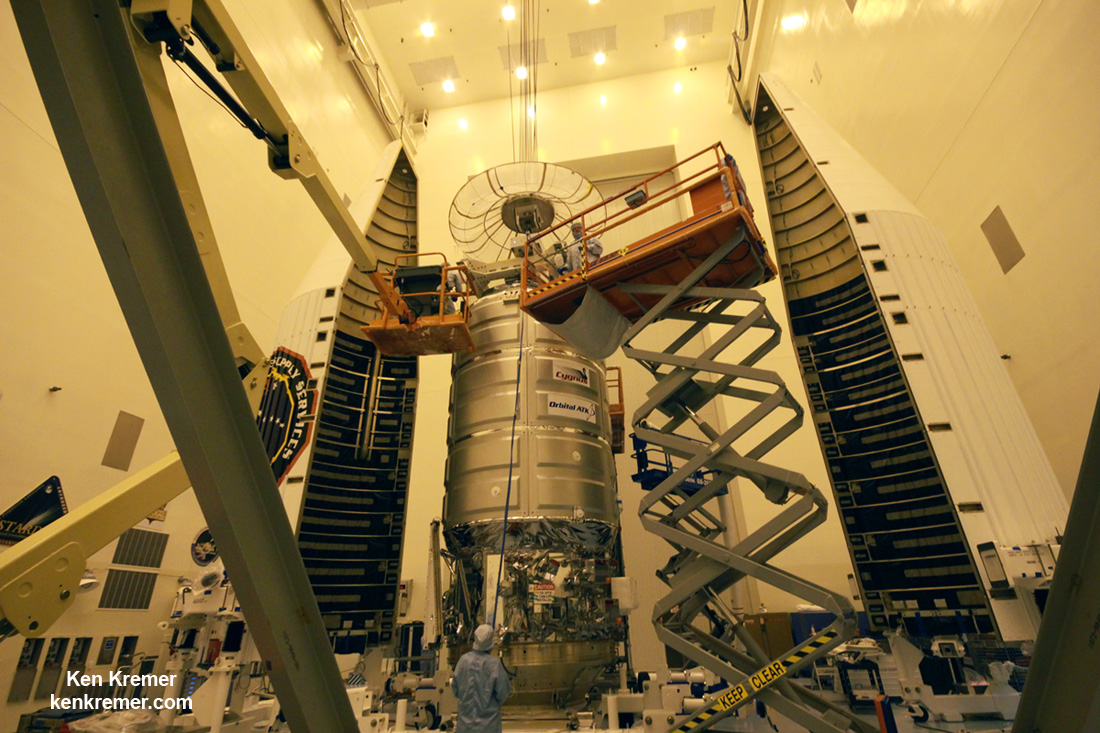
This is the third Cygnus to launch on an Atlas V rocket from the Cape. The last one launched a year ago on March 24, 2016 during the OA-6 mission. The first one launched in December 2015 during the OA-4 mission.
“We’re building the bridge to history with these missions,” said Vernon Thorp, ULA’s program manager for Commercial Missions.
“Every mission is fantastic and every mission is unique. At the end of the day every one of these missions is critical.”
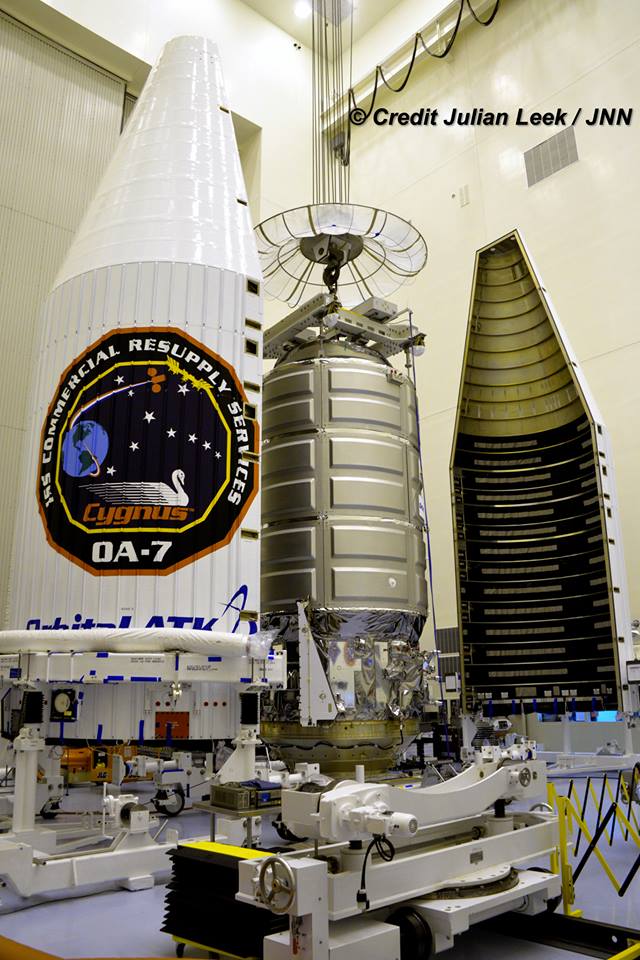
The other Cygnus spacecraft have launched on the Orbital ATK commercial Antares rocket from NASA Wallops Flight Facility on Virginia’s eastern shore.

Overall this is Orbital ATK’s seventh commercial resupply services mission (CRS) to the space station under contract to NASA.
OA-7 also counts as NASA’s second supply mission of the year to the station following last month’s launch of the SpaceX Dragon CRS-10 capsule on Feb. 19 and which is currently berthed to the station at a Earth facing port on the Harmony module.

The Cygnus OA-8 mission will launch again from NASA Wallops in the summer of 2017, DeMauro told me.
Stay tuned here for Ken’s continuing Earth and Planetary science and human spaceflight news.
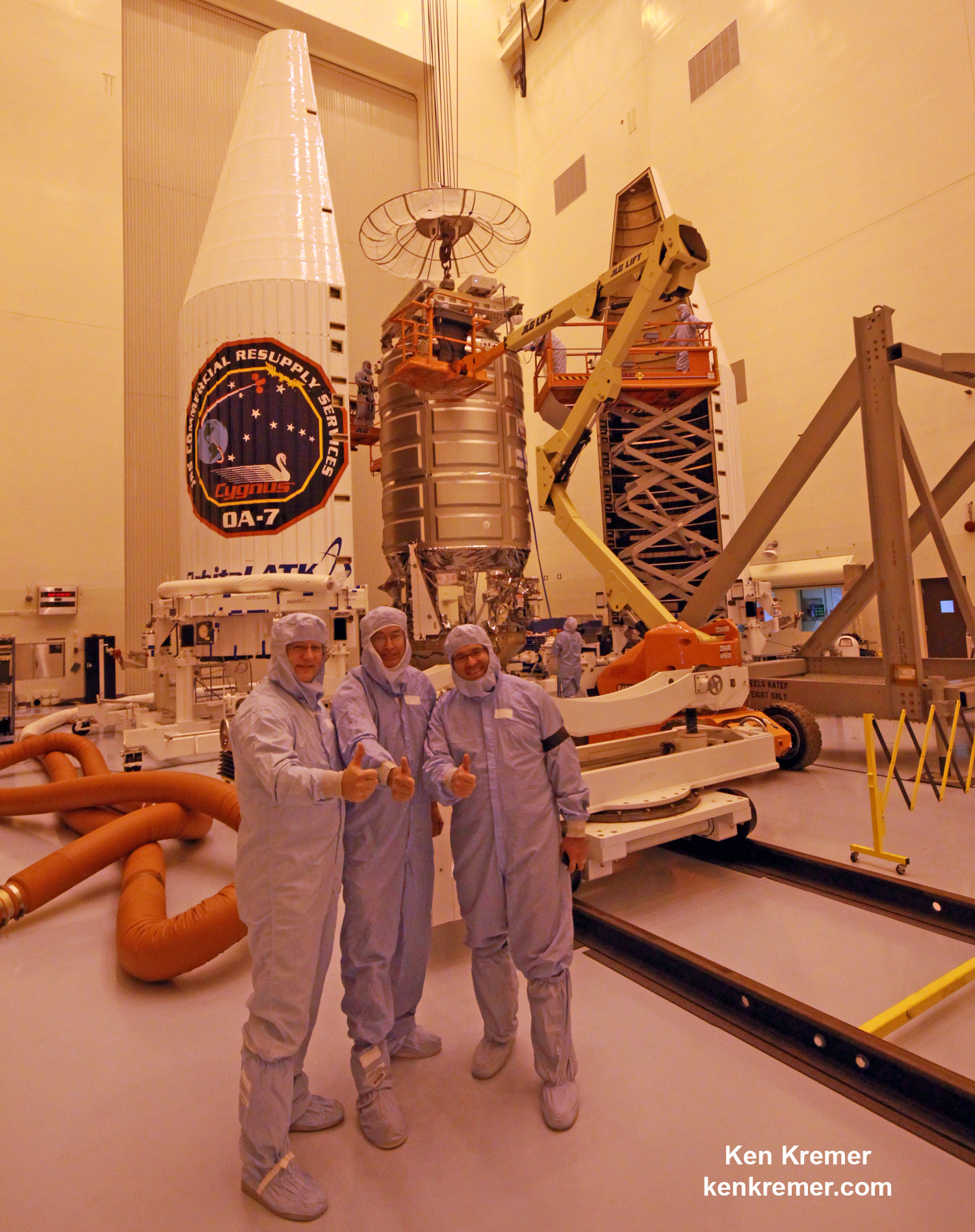
………….
Learn more about SpaceX EchoStar 23 and CRS-10 launch to ISS, ULA SBIRS GEO 3 launch, EchoStar launch GOES-R launch, Heroes and Legends at KSCVC, OSIRIS-REx, InSight Mars lander, ULA, SpaceX and Orbital ATK missions, Juno at Jupiter, SpaceX AMOS-6, ISS, ULA Atlas and Delta rockets, Orbital ATK Cygnus, Boeing, Space Taxis, Mars rovers, Orion, SLS, Antares, NASA missions and more at Ken’s upcoming outreach events at Kennedy Space Center Quality Inn, Titusville, FL:
Mar 13-15: “SpaceX EchoStar 23, CRS-10 launch to ISS, ULA Atlas SBIRS GEO 3 launch, EchoStar 19 comsat launch, GOES-R weather satellite launch, OSIRIS-Rex, SpaceX and Orbital ATK missions to the ISS, Juno at Jupiter, ULA Delta 4 Heavy spy satellite, SLS, Orion, Commercial crew, Curiosity explores Mars, Pluto and more,” Kennedy Space Center Quality Inn, Titusville, FL, evenings

